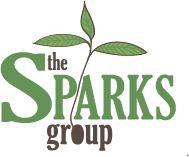How to Measure Vertical Development with Assessments
Maturity assessments measure where a person falls within the seven stages of the vertical development framework.
Key Takeaways:
- Maturity assessments are used to help leaders and their coaches understand the stage of adult development they’re in and how they can move forward
- The assessments usually contain a sentence completion element, take about 20 minutes online, and a Sparks Group coach discusses results in an hour-long debrief
- These assessments differ from some other assessments in that they’re developmental, not evaluative
Leadership development programs are becoming more common as leaders face an increasingly complex, complicated world. Vertical development tools can be a key element of these programs to help leaders understand themselves better and how they can continue to develop and expand their capacity to lead effectively.
Maturity assessments are a valuable part of the vertical development coaching process. So how do these assessments differ from others, like personality tests, and how do we use them at The Sparks Group?
What is a maturity assessment?
It’s first important to say that it is possible to measure stages of vertical development – the vertical development framework invites and relies on that knowledge.
At The Sparks Group, we use a sentence completion test (SCT), a type of maturity assessment. For those who haven’t seen a sentence completion test before, it can seem strange. But, since its creation by Jane Loevinger at Washington University, the model has evolved and been incorporated by a number of practitioners and most maturity assessments contain these types of free-response sentences to complete.
How it works: SCT is a series of sentence stems that need to be filled in by the test-taker. A person is given the beginning of a sentence and is asked to complete it.
This is an effective test because our worldview, our lens, is expressed through language. These sentence stems then lead to key information by assessing both the content and the complexity of the language used. What ideas are presented, and how many ideas are there? The assessment also measures the complexity of the language itself. Is it short? Is there any elaboration? Are responses longer, and do they use more complex language?
Then, these sentence stems and responses are categorized into the different stages of vertical development. The test takes about 20 minutes and is conducted easily online. Artificial intelligence (AI) has played a role in helping these assessments become more efficient to take and score, so they can be offered to large groups of people. They are also more financially accessible now than in the past because of automation. The Sparks Group still uses some maturity assessments that are scored by humans, not AI.
Understanding the assessment results
After the results come in, a Sparks Group coach debriefs with the client and helps them understand the results. This takes about 60 to 90 minutes. The client will get a report that explains each of the seven stages of vertical development and their “center of gravity” – or what stage they are most commonly operating in. This is when we can start a dialogue about the strengths and limitations of each stage, helping people understand where they are currently and what that means for them.
It’s important for people to understand that they shouldn’t necessarily look at the model and aim to reach the last stage. It’s not about reaching the end of the model, the last stage. It’s about finding out what stage they’re in, the best fit for them, and what their strengths are.
A good vertical development coach will also pay attention to how their client reacts to their assessment results, which should be consistent with their stage from the results.
When are maturity assessments most valuable?
Maturity assessments are typically done at the beginning of an engagement with The Sparks Group. We then use the results to form coaching goals moving forward, getting to know what people want to work on in their development. Results can inform which coach a client will work with and the overall strategy the coach will take for each person’s development.
Managers and employees alike can take the maturity assessment, and it’s the same test for everyone. However, one consideration is whether everyone needs to take the assessment. For example, we usually don’t recommend an assessment for people at the earliest stages, like Opportunist. People within those earlier stages often have difficulty with feedback, so it may not be as useful for them. We don’t want to create instances where a person would look at their assessment results and stage and think there’s something wrong with them – because there isn’t!
How maturity assessments are different from other assessments
Maturity assessments measure maturity, not personality. It’s important to note that the goal is not to try to fix or improve anything. It’s about trying to figure out what stage a person is in within vertical development and what that means for their unique, individual path.
Sometimes, organizations use personality tests to assess fit before hiring. But maturity assessments are intended to be developmental, not evaluative. They’re not meant to be used for any kind of personnel decision.
The assessment results are kept confidential so people feel comfortable and safe expressing themselves and using the results to decide where to grow. No one should be worried about other people’s opinions about their results.
The Sparks Group often uses maturity assessments in conjunction with personality and other assessments. In fact, vertical development assessments work very well alongside assessments like 360-degree feedback assessments. These together provide more dimensions to consider and discuss.
Another personality test that pairs well with vertical development is the Enneagram. This personality test is especially helpful for people within earlier stages since they’re still interested in learning about themselves and who they are. Personality tests can be great starting points. As they grow, people will become increasingly interested in the vertical development framework, which makes the combination of the two so effective.
The Sparks Group difference
The Sparks Group provides several vertical development tools, like maturity assessments, to help support our clients on their path to growth. We help clients understand the seven stages of vertical development, where they fit in, and what that means about their development. We help them align this information with where they want to be and how to get there.
Learn more about vertical development and our assessment process by contacting The Sparks Group to set up a 30-minute discovery call.

